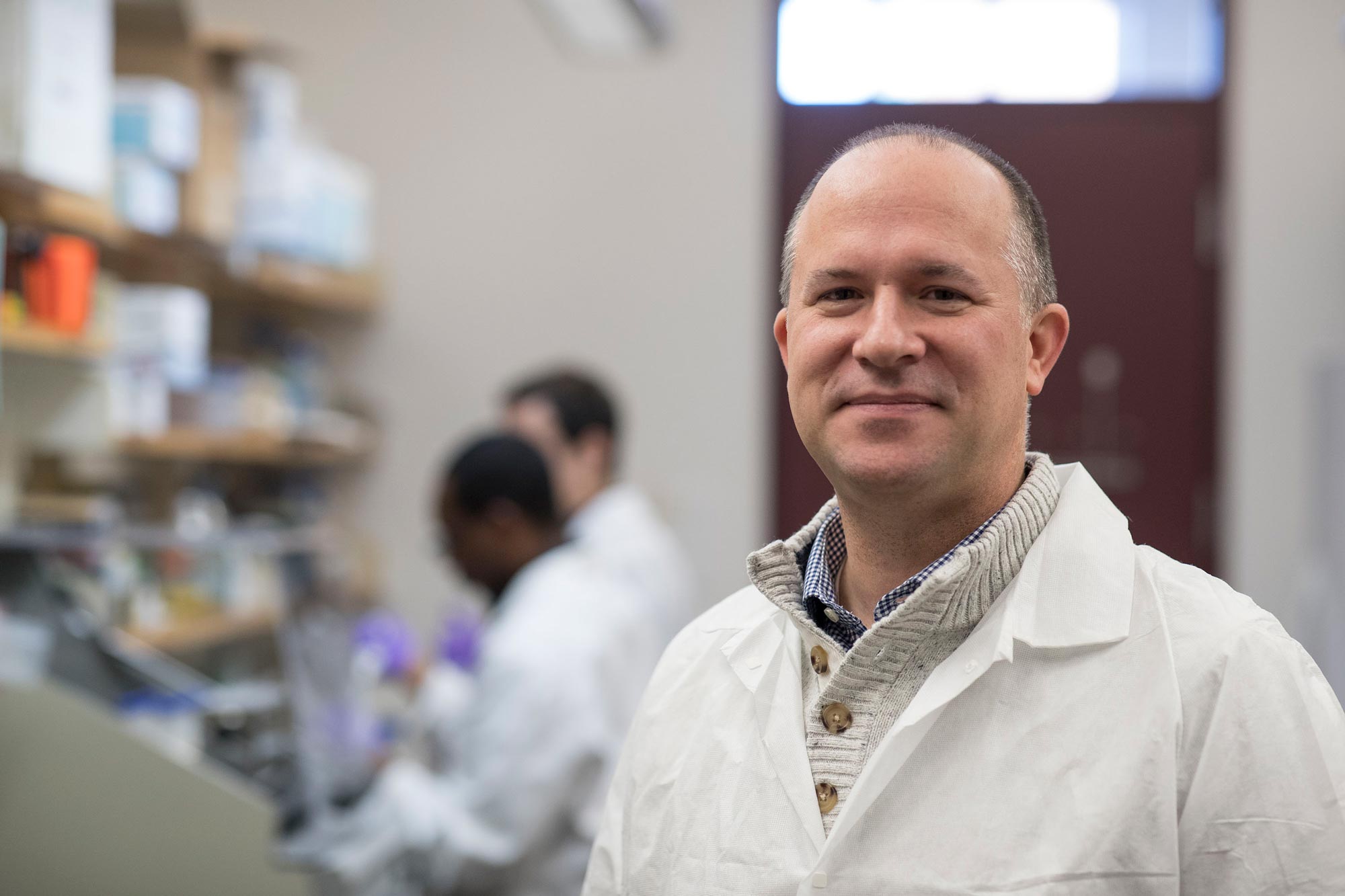
UVA Health researchers hope to find shared traits and weaknesses in bacteria that develop resistance to antibiotics and use those weaknesses against them. Antibiotic resistance is a growing problem around the world. (Illustration by Meredith M. Smith, University Communications)
University of Virginia researchers are working to outrace two dangerous germs known for quickly developing resistance to new antibiotics, and the scientists' efforts could help combat antibiotic resistance more broadly.
A team led by researcher Jason Papin is developing sophisticated computer models of Staphylococcus aureus and Pseudomonas aeruginosa, two multi-drug-resistant bacteria that infect thousands of Americans every year. The researchers will use their models to better understand the cellular processes and gene activity that make the bacteria so adept at overcoming antibiotics.
The researchers will then take their findings to the lab as part of an ambitious effort to identify vulnerabilities in the bugs and advance the development of new and more effective treatments.
By identifying shared traits in the bacteria, the researchers hope to discover common links - and weaknesses - among germs that are adept at developing antibiotic resistance, a growing problem in the United States and around the world.
"With so many complex processes involved in how bacteria evolve antibiotic resistance, we have to use systems approaches, combining computer modeling and sophisticated experiments, to try to tackle this important challenge," said Papin, of UVA's Department of Biomedical Engineering, a joint program of UVA's School of Medicine and School of Engineering and Applied Science.
"We hope that these computer models and experimental approaches will help us understand new vulnerabilities in antibiotic-resistant bacteria and consequently lead to new therapies to treat infection," he said.
The Center for Disease Control and Prevention has labeled antimicrobial resistance an "urgent global health threat." It's estimated that antibiotic-resistant germs directly killed at least 1.27 million people worldwide and contributed to the deaths of nearly 5 million others in 2019. The United States alone sees more than 2.8 million antibiotic-resistant infections each year.
Papin and his team are targeting two important contributors to those alarming numbers. The Staphylococcus aureus bacterium is very common and is found in approximately 30% of people's noses. It's typically harmless, but for some people - especially the elderly and the immunocompromised - it can trigger serious, even deadly infections. For example, it can cause pneumonia and the full-body infection known as sepsis. That makes it a serious threat in hospitals and nursing homes. It's estimated to cause 200,000 drug-resistant infections each year in the United States.

Pseudomonas aeruginosa, meanwhile, is found in soil and water. But P. aeruginosa is a particular problem in health care settings, as it can cause pneumonia and other serious infections. The bacterium is estimated to have caused more than 32,000 infections and 2,700 deaths among hospitalized patients across the United States in 2017 the CDC reports. It, too, is particularly dangerous to the elderly and immunocompromised.
Recognizing the importance of Papin's efforts to battle these bugs, the National Institutes of Health's National Institute of General Medical Sciences has awarded him a grant of more than $1.2 million. He hopes his work will benefit the battle against antibiotic resistance more broadly by creating a useful platform for future research into other pathogens.
"We have a wonderful team of students and collaborators on this project, and we're optimistic that this funding will provide the impetus necessary to make important discoveries to help us deal with the rise of antibiotic resistance," Papin said.
The NIH grant is R01GM147257.






